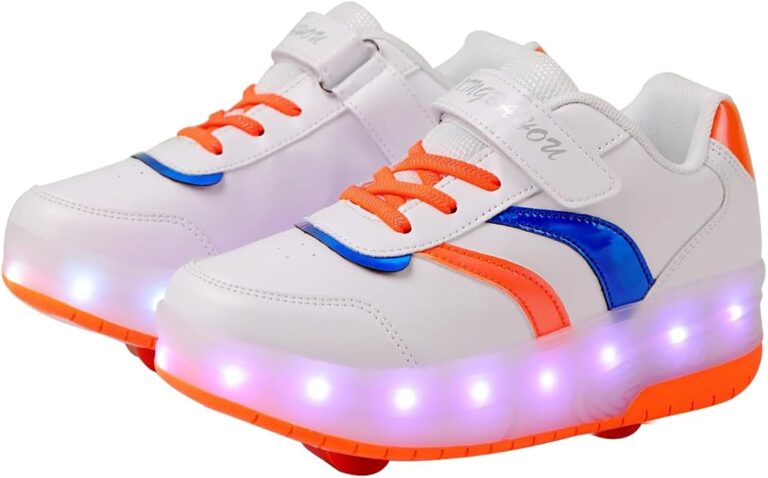Leggings should not be worn skiing because they offer little to no insulation or protection against cold weather, resulting in discomfort and increased risk of injury. When it comes to choosing appropriate attire for skiing, it is important to prioritize functionality and safety over fashion.
Instead, opt for ski-specific pants or thermal leggings designed to provide warmth and protection in the snow. These specialized garments are equipped with features such as waterproof materials, wind resistance, and insulation, keeping you comfortable and safe on the slopes.
Wearing leggings, on the other hand, may leave you vulnerable to the elements and potential injuries. Therefore, it is advisable to select suitable ski apparel to ensure a pleasant and enjoyable skiing experience.
Understanding The Importance Of Proper Clothing
The key to staying warm while skiing is to understand the importance of proper clothing, which includes avoiding wearing leggings. Layering is essential in cold weather as it provides insulation and allows you to adjust your clothing to regulate your body temperature. Moisture-wicking materials are crucial as they help to keep you dry by pulling sweat away from your body, preventing you from feeling cold and uncomfortable. When it comes to insulation options for cold conditions, there are various choices available such as down, synthetic, and fleece, each offering different levels of warmth and breathability. It is important to choose the right clothing to ensure a comfortable and enjoyable skiing experience while keeping yourself warm and protected from the elements.
The Problem With Leggings For Skiing
The problem with wearing leggings for skiing is that they come with a set of limitations that can affect your comfort and performance on the slopes. Firstly, leggings lack insulation and wind protection, making them unsuitable for cold weather conditions. Without proper insulation, your legs can get chilly and affect your overall body temperature. Moreover, leggings offer limited flexibility and movement compared to specialized ski pants. When skiing, you need the freedom to move and bend your knees without any restrictions, which leggings cannot provide. Ski pants are designed to be more durable and resistant to the elements, ensuring that you stay comfortable and protected throughout your ski session. So, it’s best to opt for ski pants that are specifically designed to meet the demands of skiing and offer superior performance in cold weather.
Alternatives To Leggings For Cold Weather Skiing
When it comes to skiing in cold weather, there are alternatives to wearing leggings. One option is thermal base layers, which are designed to wick away moisture and provide warmth. These base layers are essential for keeping you comfortable and dry while on the slopes. Ski-specific pants are another alternative. These pants are specifically designed for skiing, offering insulation and weather protection. They are often made with waterproof or water-resistant materials to keep you dry in snowy conditions.
Another aspect to consider is whether to wear bibs or regular pants. Bibs have the advantage of providing extra coverage and preventing snow from getting in at the waistline. They also offer additional insulation and can be more comfortable for some skiers. However, regular ski pants have their benefits as well, such as being easier to put on and take off and offering more freedom of movement. Ultimately, the choice between bibs and regular pants depends on personal preference and the specific needs of the skier. Consider these alternatives to leggings for a more comfortable and enjoyable skiing experience.
Essential Features To Look For In Cold Weather Ski Gear
When it comes to choosing the right ski gear for cold weather conditions, there are several essential features to consider. First and foremost, **waterproof and windproof materials** are key to keeping you dry and warm on the slopes. Look for gear that has a high waterproof rating and is made from materials such as Gore-Tex or similar technologies.
In addition, **breathability and ventilation options** are important to prevent overheating and moisture buildup inside your gear. Look for jackets and pants that have zippered vents or mesh-lined openings for added airflow.
Furthermore, **insulation levels** should be taken into account, as different weather conditions may require different levels of warmth. Consider the type and thickness of insulation used in your gear, making sure it is suitable for the temperatures you will be skiing in.
To summarize, when choosing cold weather ski gear, prioritize **waterproof and windproof materials**, look for **breathability and ventilation options**, and consider the appropriate **insulation levels** for the weather conditions you will be skiing in.
Layering For Maximum Warmth And Comfort
In this blog post, we will discuss the importance of layering for maximum warmth and comfort when skiing. One of the key aspects of layering is choosing the right base layers. The fabric and fit of your base layers can greatly affect your overall comfort. Opt for moisture-wicking materials like merino wool or synthetic blends that will keep you dry and warm during intense physical activities. Ensure that the base layers fit snugly without restricting your movement.
Additionally, mid layers play a crucial role in providing insulation without sacrificing mobility. Look for lightweight and breathable materials like fleece or down that can trap the heat generated by your body. These layers should be easy to remove or adjust according to your temperature needs.
Moreover, the outer layers are essential for shielding against wind, snow, and cold temperatures. Choose a ski jacket and pants that are both waterproof and windproof, with sealed seams and adjustable closures to keep you protected from the elements. Don’t forget accessories like gloves, hats, and neck warmers to protect the exposed areas of your body.

Credit: jojotastic.com
Other Key Gear For Cold Weather Skiing
When skiing in cold weather, it’s not just about avoiding leggings. The right gear can make a huge difference in your comfort and safety. Here are some essential items to consider:
Gloves and mittens: Protecting your hands from frostbite
Don’t underestimate the importance of keeping your hands warm. Invest in a pair of high-quality gloves or mittens that offer both insulation and waterproofing. Look for options with adjustable straps and reinforced palms for added durability. Remember, frostbite is a real risk, so be sure to choose gloves or mittens that provide adequate protection.
Hats and helmets: Keeping your head warm and safe
Your body loses a significant amount of heat through your head, so it’s crucial to keep it well-insulated. Opt for a hat or a ski helmet with built-in insulation. Look for features like an adjustable strap and ear flaps for extra protection against the cold. Additionally, choose a helmet that fits snugly but comfortably to ensure maximum safety.
Thermal socks and boots: Ensuring warmth and comfort for your feet
Don’t overlook your feet when it comes to staying warm and comfortable on the slopes. Invest in thermal socks made of moisture-wicking material to keep your feet dry and warm. Pair them with well-insulated ski boots that provide proper support and insulation. Look for boots with adjustable buckles or straps for a customized fit that ensures both warmth and comfort.
Accessories To Enhance Your Cold Weather Skiing Experience
Accessories play a crucial role in enhancing your cold weather skiing experience. One such accessory is neck gaiters and face masks, **protecting your face** from biting winds. They act as a barrier against the harsh elements and **keep you warm** throughout your skiing adventure. Another important accessory is goggles and sunglasses, **shielding your eyes** from sun glare and snow. These accessories not only provide clear vision but also **prevent any potential eye damage**. Additionally, hand and toe warmers can provide **additional warmth** on extremely cold days, ensuring that your extremities stay cozy and comfortable. These accessories are essential for a successful and enjoyable skiing trip, allowing you to focus on conquering the slopes without any discomfort or distractions.
Maintaining And Caring For Your Cold Weather Gear
If you want to maintain and care for your cold weather gear, it’s important to follow proper washing and drying instructions for different materials. **Leggings** are no exception. For synthetic leggings, machine wash them in cold water with a mild detergent. **Avoid using bleach or fabric softeners** as they can damage the fabric. **Air drying** is the best option, as high heat can cause shrinkage and damage the leggings’ elasticity.
When it comes to storing your cold weather gear, make sure it’s clean and completely dry before putting it away. **Avoid folding or squishing** your gear too tightly, as this can lead to creases and damage. Instead, **lay your leggings flat** in a drawer or storage container to maintain their shape.
To prolong the lifespan of your cold weather gear, it’s important to recognize signs of wear and tear. Look out for **pilling**, **fading**, **loose threads**, or **stretching** in your leggings. If you notice any of these signs, it may be time to consider replacing them. **Investing in high-quality leggings** and taking proper care of them will ensure that you can enjoy skiing and other outdoor activities without any wardrobe malfunctions.
Final Thoughts And Recommendations
|
Finding the right balance between warmth and mobility is essential when skiing. While leggings may be comfortable under normal circumstances, they are not suitable for cold weather conditions on the slopes. The importance of investing in quality cold weather gear cannot be overstated. Skiing requires specialized clothing that provides insulation and protection against the elements. To enjoy your skiing experience to the fullest, it is crucial to wear proper gear. This includes insulated pants or ski-specific trousers that offer warmth and flexibility. Leggings, on the other hand, lack insulation and may hinder mobility, leading to discomfort during skiing. |
Can Après-Ski Outfits Be Both Stylish and Functional for Skiing?
Balancing style and practicality on the slopes is easier than ever with versatile designs that cater to both needs. Layered clothing, waterproof fabrics, and chic accessories are transforming après-ski fashion. For inspiration, explore “aprèsski winter outfit ideas” that combine comfort, performance, and trendiness, ensuring you’re ready for the snow in style.
Frequently Asked Questions On Why Not To Wear Leggings Skiing
Are You Supposed To Wear Leggings Under Ski Pants?
Yes, it is recommended to wear leggings under ski pants. Leggings provide an extra layer of warmth and insulation, making your skiing experience more comfortable. They also help to wick away moisture and keep your legs dry.
Can You Wear Gym Leggings As Ski Thermals?
Yes, you can wear gym leggings as ski thermals. They provide warmth and flexibility during skiing.
Can I Wear Lululemon Leggings Skiing?
Yes, you can wear Lululemon leggings for skiing. They are designed with a combination of comfort, flexibility, and warmth, making them suitable for outdoor activities like skiing. Lululemon leggings are popular among athletes due to their high-quality fabric and performance features.
Can I Wear Leggings Instead Of Thermals?
No, leggings are not a suitable substitute for thermals. Thermals are specifically designed to provide extra insulation and warmth in cold weather conditions. Leggings, on the other hand, are primarily intended for fashion purposes and may not offer the same level of heat retention.
Conclusion
It is clear that wearing leggings while skiing may not be the best choice. Despite their comfort and flexibility, leggings lack the necessary insulation and protection needed for the cold and rugged conditions of the snowy slopes. Opting for more suitable attire, such as ski pants, can help ensure a safer and more enjoyable skiing experience.
Stay warm and stylish on the slopes!





